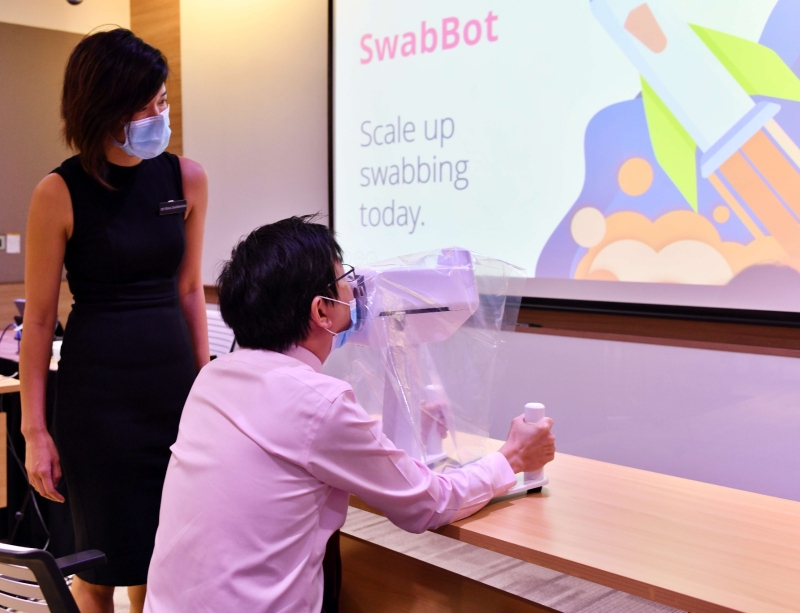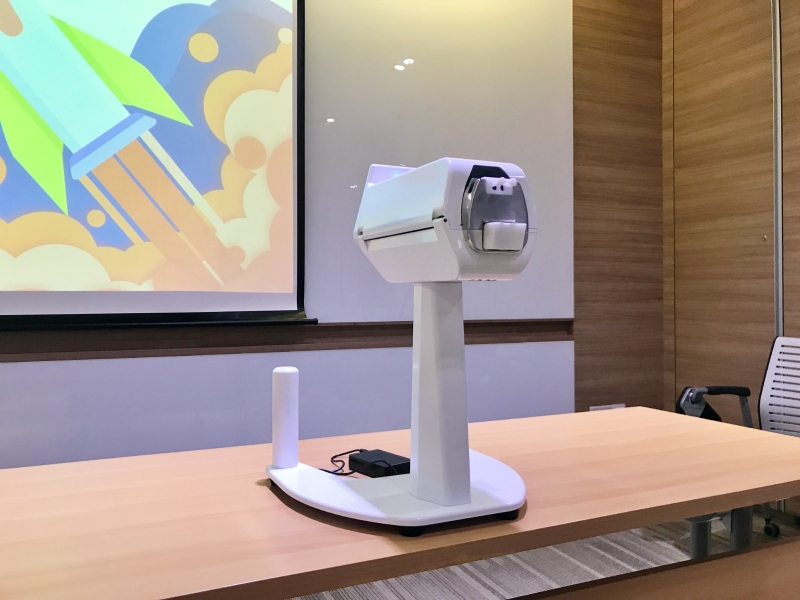
Image credit: NCCS
Anyone who has undergone a COVID-19 swab test would probably tell you that it is largely an unpleasant experience. Even the candidates look like they’re in agony in photographs. Fortunately, we can look forward to less painful swabs with the Singapore-made COVID-19 swab test robot.
Enter SwabBot, a robot that grants patients full control over the swabbing process. It is designed by a group of clinicians from National Cancer Centre Singapore, Singapore General Hospital and Duke-NUS Medical School, in partnership with Biobot Surgical Pte Ltd.
In a press release, the groups said that SwabBot is designed to address the limitations of manual COVID-19 swab tests by reducing the need for trained manpower, standardising the consistency of the swabs taken and “providing greater throughput” of swab tests.
Self-administered for comfort and efficiency

Image credit: NCCS
Part of why a swab test looks so intimidating is that you’re basically allowing someone to stick something into your nose.
With the SwabBot, you can swab yourself while moving away as and when you start to get uncomfortable. This makes it different from existing COVID-19 swab test robots from other countries.
Here are the benefits which the SwabBot brings to our fight against COVID-19:
- It reduces the process from a few minutes to 20 seconds
- Patients can simply move their head away when it gets intolerable
- Swabs taken will be more consistent
- Reduces the risk of exposure to the virus for swabbers
- Less training is needed on how to conduct swab tests
Also read: How Singapore Is Eliminating COVID-19 and What Other Countries Can Learn From Them
How does this COVID-19 swab test robot work?
To start the process, patients simply place their chin against the base with a nostril latches onto the disposable nosepiece. Once activated, the nose-piece will move slightly upwards to widen the nostril. The swab will then extend and gently insert the swab 10cm into the patient’s nose to the back of the nasal cavity.
Throughout this process, the SwabBot will detect any resistance from the patient and retract accordingly. Alternatively, patients can move their heads back to the same effect.
To date, SwabBot has been trialed on 75 patients, with all of them leaving with a positive experience. “The experience was painless, and the process of swabbing by the robot was very quick,” said Mr Ariata Elizer Ellevera, 49.
SwabBot is in the process of obtaining a patent, and a CE mark which can potentially put it on sale in Europe.





